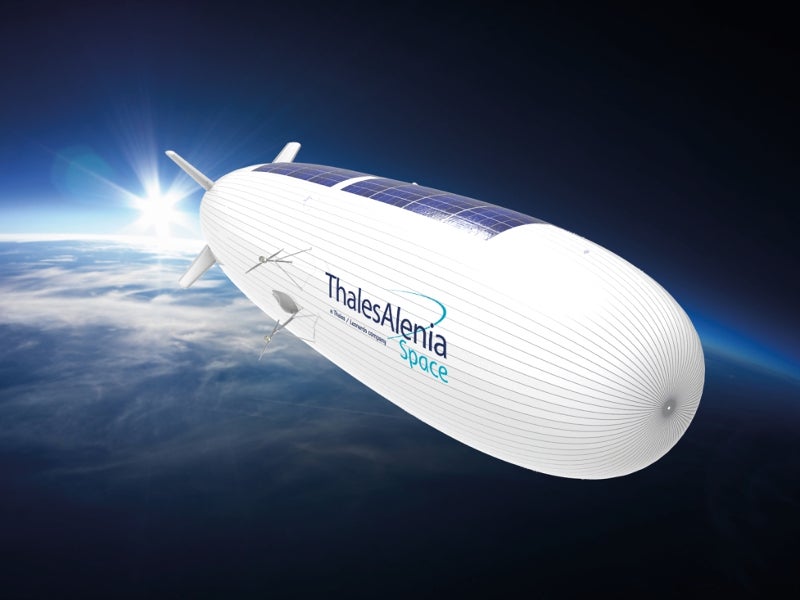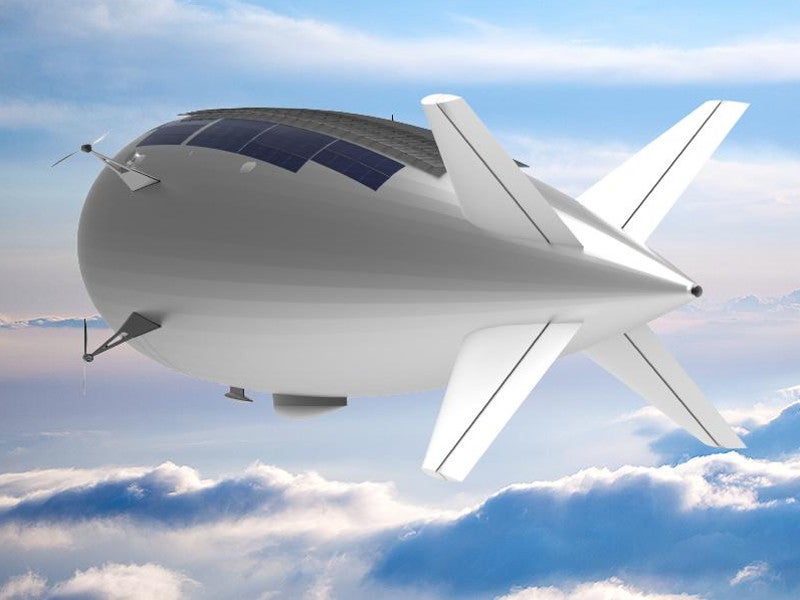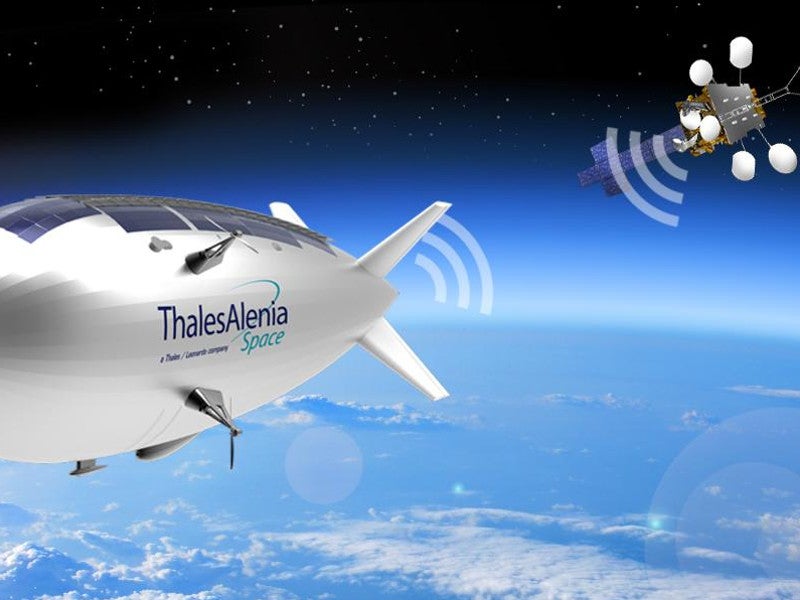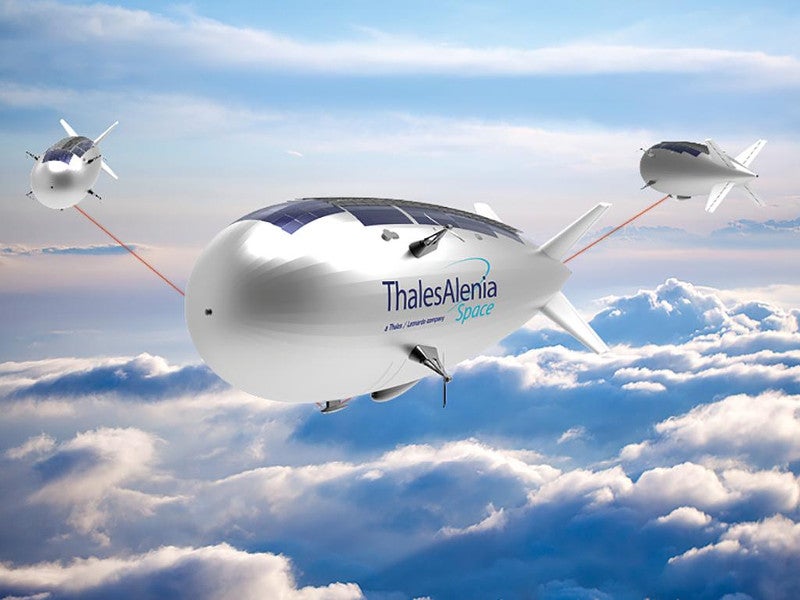Stratobus is an autonomous, stratospheric airship providing permanent monitoring and surveillance for both civil and military applications.
The multi-mission Stratobus platform is a lighter-than-air high altitude pseudo satellite (HAPS) that supports a range of government missions. The airship concept was displayed at the Paris Air Show in June 2019. It will act as a missing link between satellites and drones and will also meet the market demand for a combined satellite, aerial mission, drone and HAPS services.
The airship is being developed by Thales Alenia Space in collaboration with CNIM Air Space (formerly Airstar Aerospace), Solution F and Tronico-Alcen.
The project partners expect to conduct a flight demonstration of the prototype flight model by the end of 2023. The demonstration flight will lead to the commercialisation of the aerostat.
Thales and Direction générale de l’armement (DGA) signed a concept study contract for studying continuous stratospheric platform benefits to enhance the defence capabilities of France, in January 2020.
The concept study will evaluate the potential use of Stratobus type platforms in intelligence, surveillance and reconnaissance (ISR) applications to meet the operational requirements of the French Army.
Stratobus airship development
The research and development on the aerostat project officially began in April 2016. The programme partners completed the system readiness review in December 2016. The French Ministry of Industry and Digital Technology selected the Stratobus project under the New Industrial France programme which is intended to drive the modernisation of the French industry.
Thales Alenia Space is the lead contractor in the programme and is responsible for the systems integration, solar arrays, avionics and certification.
Solutions F will provide the electric propulsion system that will allow the airship to operate in a stationary position. CNIM Air Space will develop the fully-dressed envelope for the airship and Tronico-Alcen will contribute towards the development of the energy conditioning system.
Thales Alenia Space signed a memorandum of understanding (MOU) with MINES ParisTech engineering school and MASDAR institute for studying the possible applications of Stratobus for environmental protection.
Thales Alenia Space signed a memorandum of understanding (MOU) with Southwest Research Institute (SwRI) for the development of Stratobus, in July 2018. SwRI will use its experience in lighter-than-air technologies to provide technical advice and assistance for the airship.
Stratobus design and features
Stratobus will have a length of more than 100m, a diameter of 33m and a weight of 5t. It will be able to fly at an altitude of 20km in the lower reaches of the stratosphere above airspace dedicated to air traffic and jet streams.
The airship will host 250-450kg payloads under ideal conditions to perform a range of operations.
Stratobus will be fitted with a ring around the balloon, allowing it to rotate in order to face the sun during all seasons. It will have the capacity to hold up to 60,000m3 of carrier gas.
The total life span of the airship in the stratosphere will be five years, while it can fly autonomous missions which can last up to one year.
The aerostat is designed to be launched without the need for a launcher. It can reach the orbit in approximately four hours.
Stratobus HAPS missions
Stratobus HAPS can perform a range of missions in support of surveillance, navigation, observation, and telecommunications. The aerostat concept envisages deployment to provide information to soldiers in theatres of operation.
The airship can also provide permanent regional coverage. It will have the capability to provide surveillance in several areas including maritime, terrestrial, environmental and scientific. The platform can also assist regional navies in patrolling duties.
The Stratobus airship will also support telecommunications and will also offer permanent surveillance of borders, critical assets such as off-shore platforms, and monitoring of forest fires, pollution and beach erosion.
Propulsion and power
The airship is designed to be powered by a combination of solar energy and eco-friendly green technologies to ensure a low carbon footprint. A solar concentrator, which was initially planned to be placed inside the balloon, will be positioned on top of the airship. A solar array to be installed on the aircraft will power a reversible fuel cell which will provide onboard energy.
The fuel cell will have the ability to store energy during the night to ensure the platform to function during the night without power issues. Two electric motors will be fitted on either side of the airship. The motors will be powered by solar panels during the day and will draw energy from batteries during the night.
The airship will be fitted with the Gondola mobility system, allowing it to rotate around its longitudinal axis to ensure the solar panels track the sun for greater utilisation of the solar energy.
Funding
The General Commission for Investment (CGI) and investment bank Bpifrance reached an agreement to provide €16.6m ($18.67m) funding for the Stratobus project’s development phase, in June 2016.
Contractors involved in Stratobus development
CNIM is responsible to design the rotation system and Gondola mobility system of the airship. The company was also contracted to provide rigid structures including four motor mountings, nacelle, and mechanical ballast.
Norwegian firm Cmr-Prototec was contracted to supply the energy storage system for the airship.
MMIST, a Canada-based provider of aerial delivery products and services, is supplying the parachutes.






